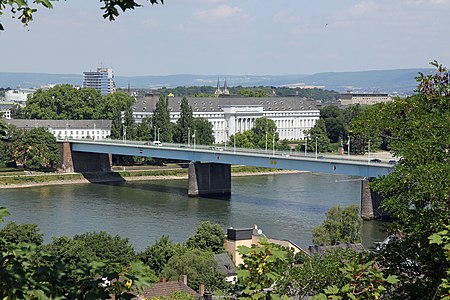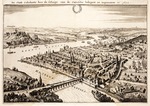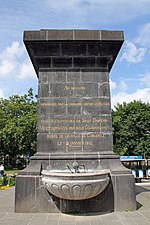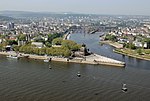Pfaffendorf Bridge
Bridges completed in 1864Bridges completed in 1953Bridges in Rhineland-PalatinateBridges over the RhineBuildings and structures in Koblenz ... and 3 more
Railway bridges in GermanyRoad bridges in GermanyTransport in Koblenz

The Pfaffendorf Bridge (German: Pfaffendorfer Brücke) is the oldest bridge over the Rhine at Koblenz, in the German state of Rhineland-Palatinate. It carries federal highway B 49 over the Rhine, and connects central Koblenz with the suburbs of Pfaffendorf and Ehrenbreitstein. The first bridge was completed in 1864. It was destroyed in the Second World War and the current bridge was opened in 1953.
Excerpt from the Wikipedia article Pfaffendorf Bridge (License: CC BY-SA 3.0, Authors, Images).Pfaffendorf Bridge
B 49, Koblenz Mitte
Geographical coordinates (GPS) Address External links Nearby Places Show on map
Geographical coordinates (GPS)
| Latitude | Longitude |
|---|---|
| N 50.353055555556 ° | E 7.6047222222222 ° |
Address
Pfaffendorfer Brücke
B 49
56068 Koblenz, Mitte
Rhineland-Palatinate, Germany
Open on Google Maps










